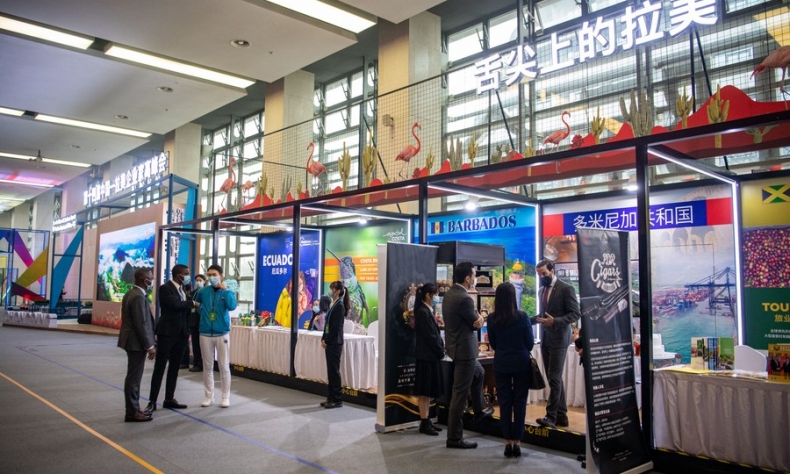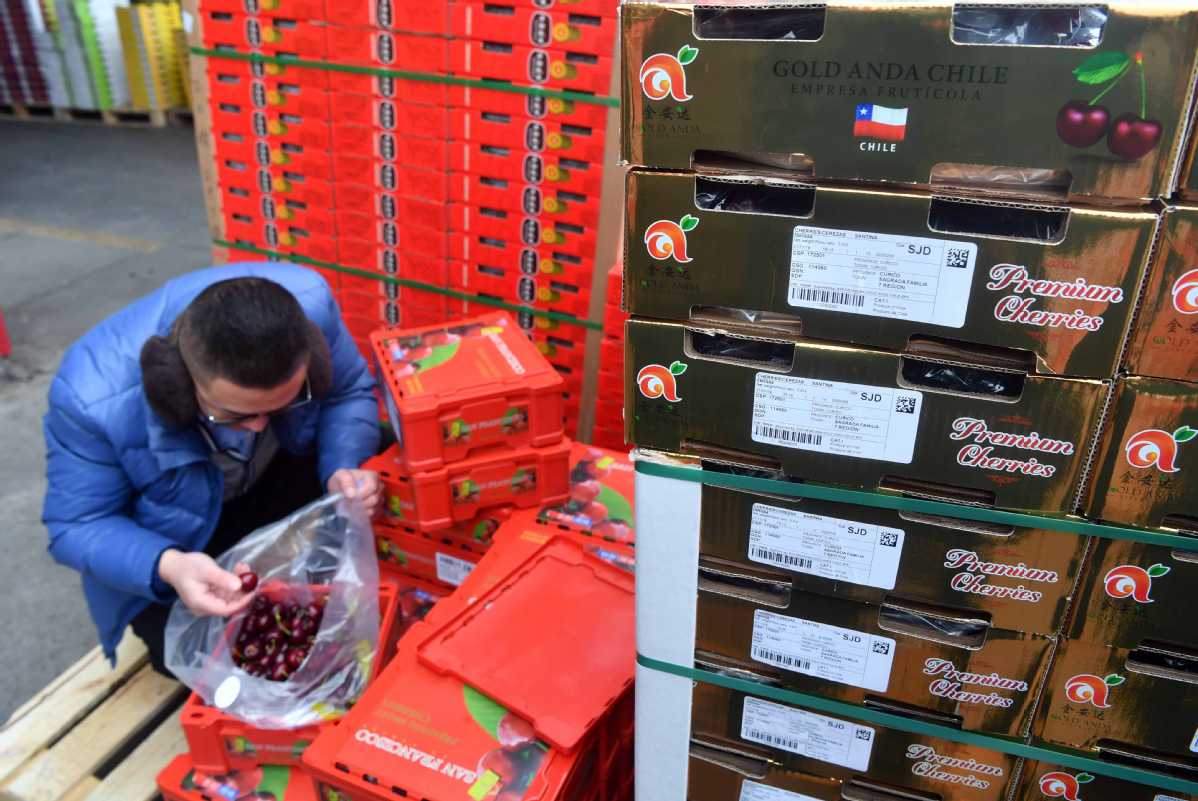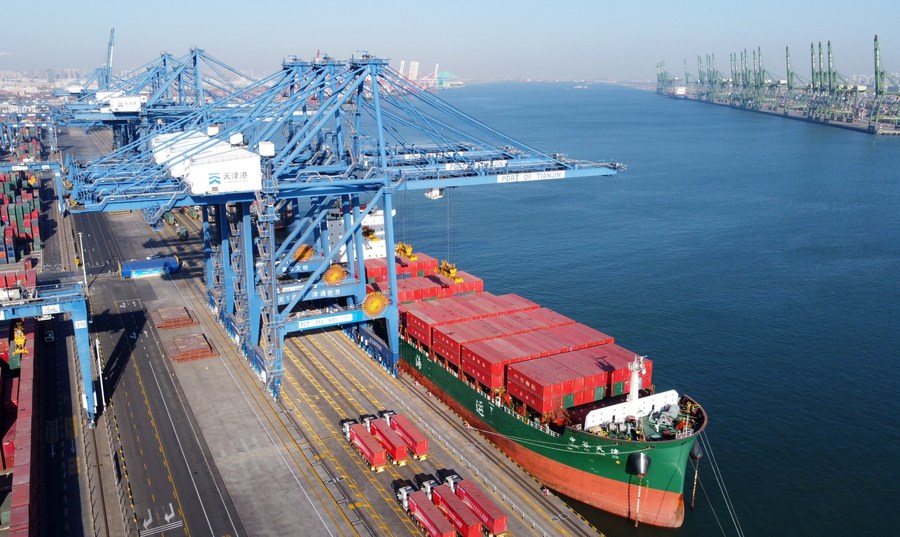Partners Across the Pacific Deepen and Diversify Exchange

As China widens its doors, the LAC countries have also been opening up their markets. The two-way opening up will benefit people on both sides.
In 2021, trade between China and Latin American and Caribbean (LAC) countries exceeded $450 billion for the first time. China built and put into use more than 100 infrastructure projects in the region from 2005 to 2020, creating more than 600,000 local jobs, Mao Ning, a Chinese Foreign Ministry spokesperson, told a briefing in Beijing on September 8.
But this is far from a full picture of the level China-LAC cooperation has reached.
In addition to trade in goods, China-LAC exchanges in sectors including technology, education, culture and e-commerce have boomed.
During the China-LAC Scientific and Technological Innovation Forum in early September, the Ministry of Science and Technology of China signed a memorandum of understanding with the scientific and technological departments of roughly 20 LAC countries to promote the building of a sustainable food innovation center.
During the forum, consensus was formed on continuing cooperation on clean energy, digital technology, agricultural science and technology, and satellite communications.

Sell to China
While China is a large market with great potential, reaching out to Chinese consumers on the other side of the ocean was not easy. However, fast-growing e-commerce platforms and improved logistics services are assisting LAC companies gain and increase market access.
“China and the LAC countries have jointly ensured food security and mutual access to each other’s markets for unique agricultural products. The cooperation has not been hindered by distance, but has yielded fruitful results,” Mao said.
Chile is well known for its cherries, but the transportation of the fruits to China was once a problem for Chilean cherry growers. “In the early days, preservation was a big problem, because it took at least five days for air freight from Chile to China and 30 days for sea freight,” Cristian Espinoza, an exporter of Chile-based trade company Representaciones AJ Trading Spa, told Beijing Review.
According to Espinoza, demand from Chinese consumers has driven the upgrade of Chile’s cherry industry. As technologies for maintaining freshness have improved and demands have surged, cherries are making the journey via sea rather than air. Chile has established a “cherry route” that has reduced the time it takes the fruit to reach China to around 20 days and cherry exports have this year returned to pre-pandemic levels.
The cherry industry is a pillar of Chile today, as around 500,000 people work in the sector. Many Chilean cherry growers use Chinese short video platform Douyin to promote their products, Andrés Fuenzalida, CEO of Copefrut, a Chilean fruit company, told 21st Century Business Herald, a leading Chinese business newspaper.
According to Fuenzalida, Chilean cherries are mainly sold in supermarkets and fruit chain outlets in China, while many e-commerce platforms have also seen a growing share of the market in recent years.

At the end of 2020, China’s e-commerce platform Pinduoduo started to partner with the Chilean Fruit Exporters Association. The partnership allows imported cherries to reach Chinese consumers directly from warehouses at ports, which reduces both cost and delivery time. Another e-commerce giant JD.com also signed contracts with Chilean fruit exporters last year.
JD.com is also cooperating with Uruguayan enterprises. Starting from 2018, it has joined hands with Zonamerica, a tech industrial zone, to introduce Uruguayan agricultural products, textiles and crafts to China.
At the same time, Chinese digital and tech service providers are expanding to LAC consumers. China’s ride-hailing platform Didi Chuxing (Didi) and e-commerce platform Alibaba have offered delivery services in many LAC countries. Tech firm Huawei has launched its COVID-19 diagnosis system powered by artificial intelligence (AI) in countries including Mexico, Chile and Panama.
Digital technologies will help the two sides overcome external difficulties, and further mutual trade ties, Zhou Mi, Associate Director of Department of American and Oceanian Affairs under the Chinese Academy of International Trade and Economic Cooperation, told Xinhua News Agency.
Expanding exchanges
During the Beijing International Film Festival in late August, five Argentine films, including Machine for the Aura and The Heist of the Century, were a hit with the Chinese audience. Argentina was the guest of honor of this year’s festival, with its big-screen products further introducing the country to the Chinese public.
“We are trying to get more Argentine movies into the Chinese market so that we can show people in China our culture and our way of living,” Marta Eva González, cultural attaché at the Embassy of Argentina in China, told Beijing Review.
Argentina is also promoting its literature through a governmental program that supports the publishing of Argentine literary classics in Chinese. There are book-sharing programs between libraries and also exchanges between artists of the two countries. “We have also conducted joint [COVID-19] vaccine research and development,” González said.

This year marks the 50th anniversary of the China-Argentina diplomatic relations. China is the second largest trading partner of Argentina and an important market for Argentine products. Bilateral cooperation in the fields including trade, medicine, culture and science is robust, according to González.
At the 2022 China International Fair for Trade in Services in Beijing from August 31 to September 5, Argentina presented both services and agricultural products.
Ana Fernández Blanco, a secretary with the Embassy of Argentina in China’s Economic and Cultural Section, told Beijing Review that her country has great potential in the services sectors. It is one of the main exporters of services in Latin America with advanced technological development and a highly educated workforce.
Uruguay is also seeking to expand trade in services with China. Uruguayan fin-tech unicorn dLocal has provided services for many enterprises operating in the LAC countries, including Didi. It established an office in Shenzhen, Guangdong Province in south China, in 2016 to better explore the Chinese market. Uruguayan software company GeneXus has also entered China, providing AI solutions for Chinese enterprises.
According to the Peruvian Government, trade in services contributes around 60 percent to the country’s GDP growth. From 2011 to 2021, its exports of software products plus financial and intellectual services grew at an annual average rate of approximately 10 percent. Luis Quesada, Peruvian Ambassador to China, told Beijing Review that the two countries are expected to cooperate more on e-commerce, digital governance and online education.
GoJom, a Peruvian real estate firm, for example, announced at a 2021 China-Peru investment forum its plans to cooperate with Chinese enterprises to apply 5G and big data technologies in the country’s property market.
“China and the LAC countries are discovering expanding complementarity in traditional services sectors including transportation and communication. Emerging trade between the two sides in the fields such as entertainment and remote healthcare and education will upgrade mutual trade,” Yue Yunxia, a senior research fellow at the Institute of Latin American Studies, the Chinese Academy of Social Sciences, told Xinhua.
“As China widens its doors, the LAC countries have also been opening up their markets. The two-way opening up will benefit people on both sides,” Yue said.
 Facebook
Facebook
 Twitter
Twitter
 Linkedin
Linkedin
 Google +
Google +










